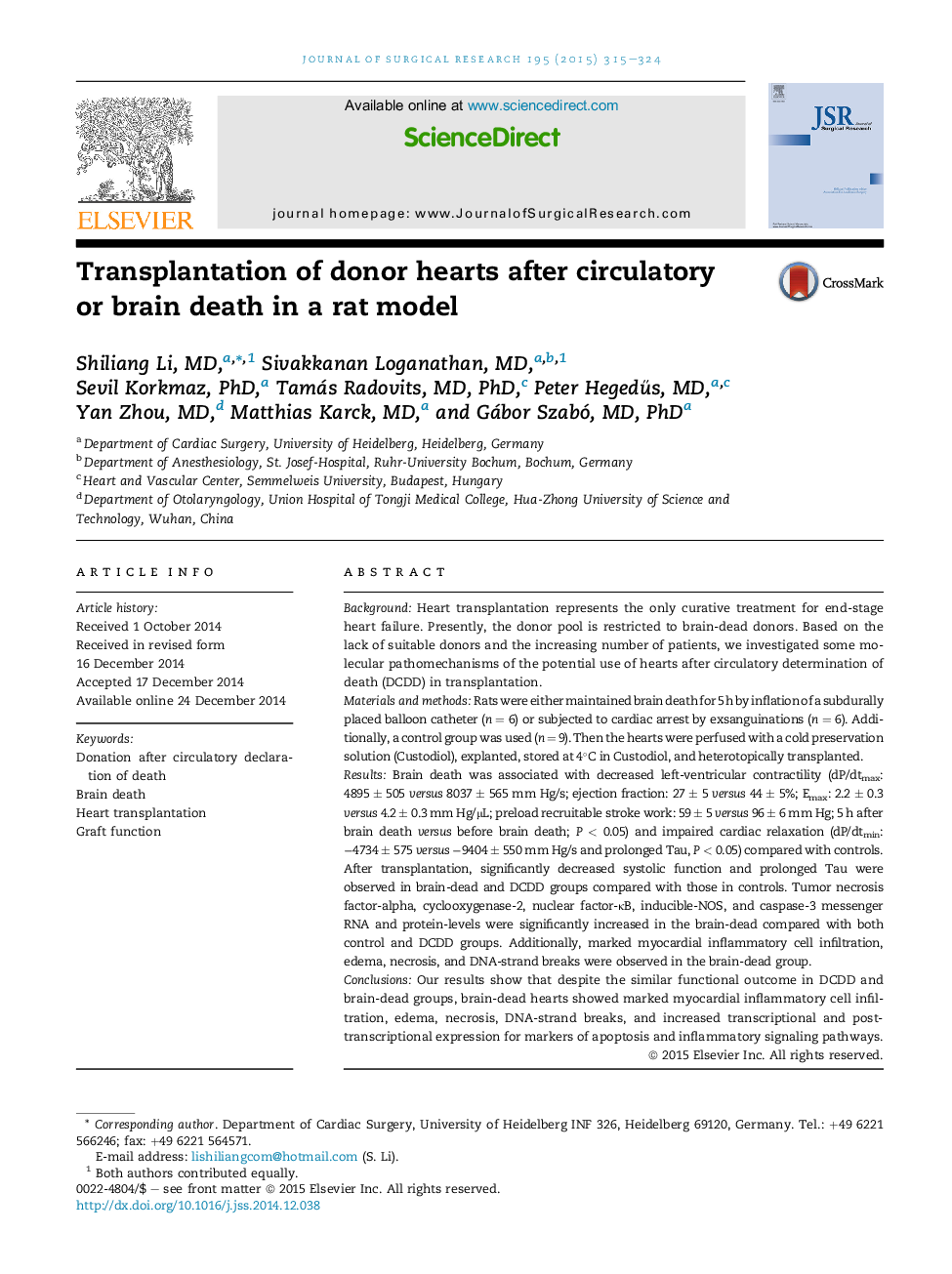| کد مقاله | کد نشریه | سال انتشار | مقاله انگلیسی | نسخه تمام متن |
|---|---|---|---|---|
| 4299904 | 1288404 | 2015 | 10 صفحه PDF | دانلود رایگان |
BackgroundHeart transplantation represents the only curative treatment for end-stage heart failure. Presently, the donor pool is restricted to brain-dead donors. Based on the lack of suitable donors and the increasing number of patients, we investigated some molecular pathomechanisms of the potential use of hearts after circulatory determination of death (DCDD) in transplantation.Materials and methodsRats were either maintained brain death for 5 h by inflation of a subdurally placed balloon catheter (n = 6) or subjected to cardiac arrest by exsanguinations (n = 6). Additionally, a control group was used (n = 9). Then the hearts were perfused with a cold preservation solution (Custodiol), explanted, stored at 4°C in Custodiol, and heterotopically transplanted.ResultsBrain death was associated with decreased left-ventricular contractility (dP/dtmax: 4895 ± 505 versus 8037 ± 565 mm Hg/s; ejection fraction: 27 ± 5 versus 44 ± 5%; Emax: 2.2 ± 0.3 versus 4.2 ± 0.3 mm Hg/μL; preload recruitable stroke work: 59 ± 5 versus 96 ± 6 mm Hg; 5 h after brain death versus before brain death; P < 0.05) and impaired cardiac relaxation (dP/dtmin: −4734 ± 575 versus −9404 ± 550 mm Hg/s and prolonged Tau, P < 0.05) compared with controls. After transplantation, significantly decreased systolic function and prolonged Tau were observed in brain-dead and DCDD groups compared with those in controls. Tumor necrosis factor-alpha, cyclooxygenase-2, nuclear factor-κB, inducible-NOS, and caspase-3 messenger RNA and protein-levels were significantly increased in the brain-dead compared with both control and DCDD groups. Additionally, marked myocardial inflammatory cell infiltration, edema, necrosis, and DNA-strand breaks were observed in the brain-dead group.ConclusionsOur results show that despite the similar functional outcome in DCDD and brain-dead groups, brain-dead hearts showed marked myocardial inflammatory cell infiltration, edema, necrosis, DNA-strand breaks, and increased transcriptional and posttranscriptional expression for markers of apoptosis and inflammatory signaling pathways.
Journal: Journal of Surgical Research - Volume 195, Issue 1, 1 May 2015, Pages 315–324
